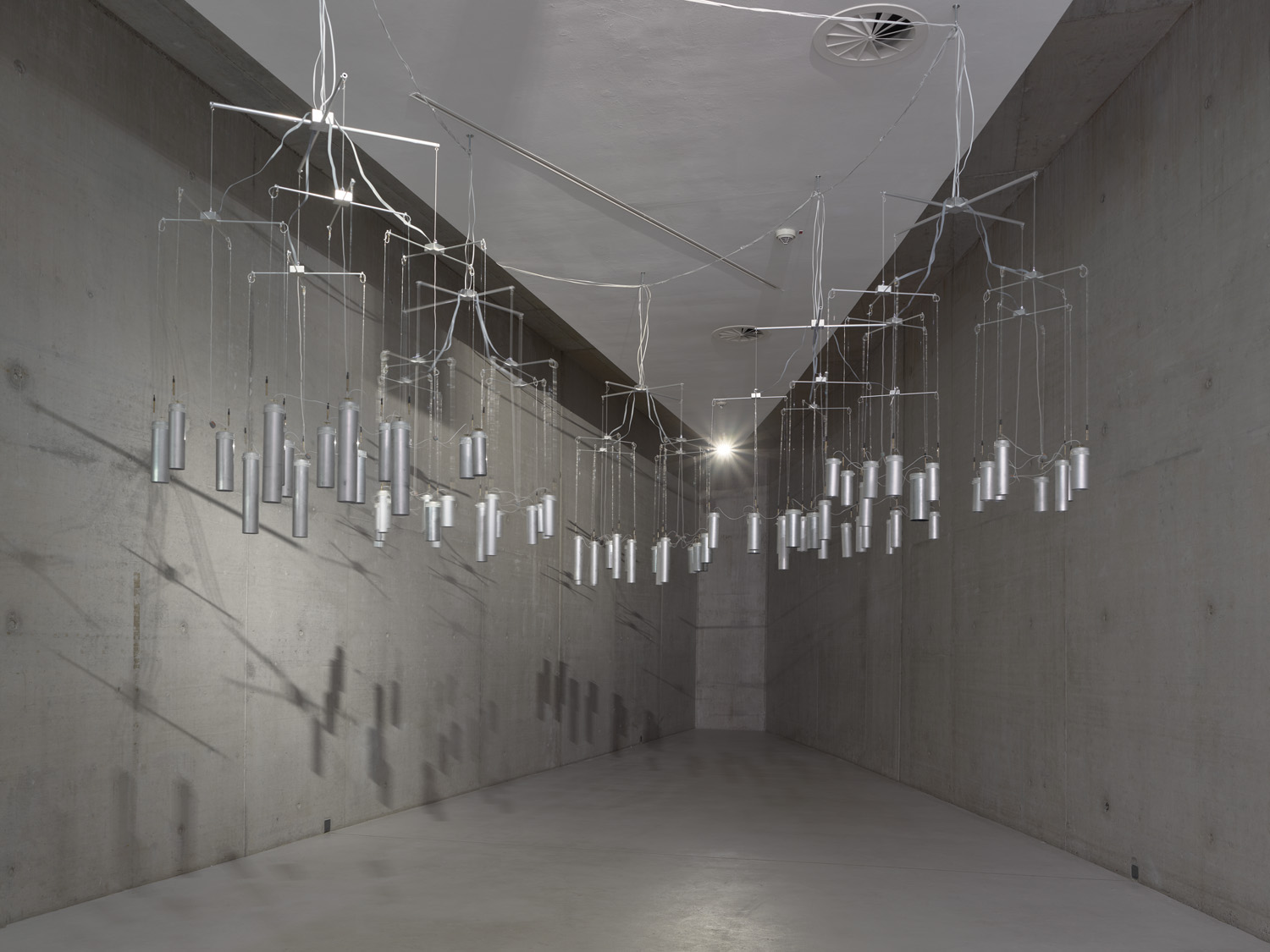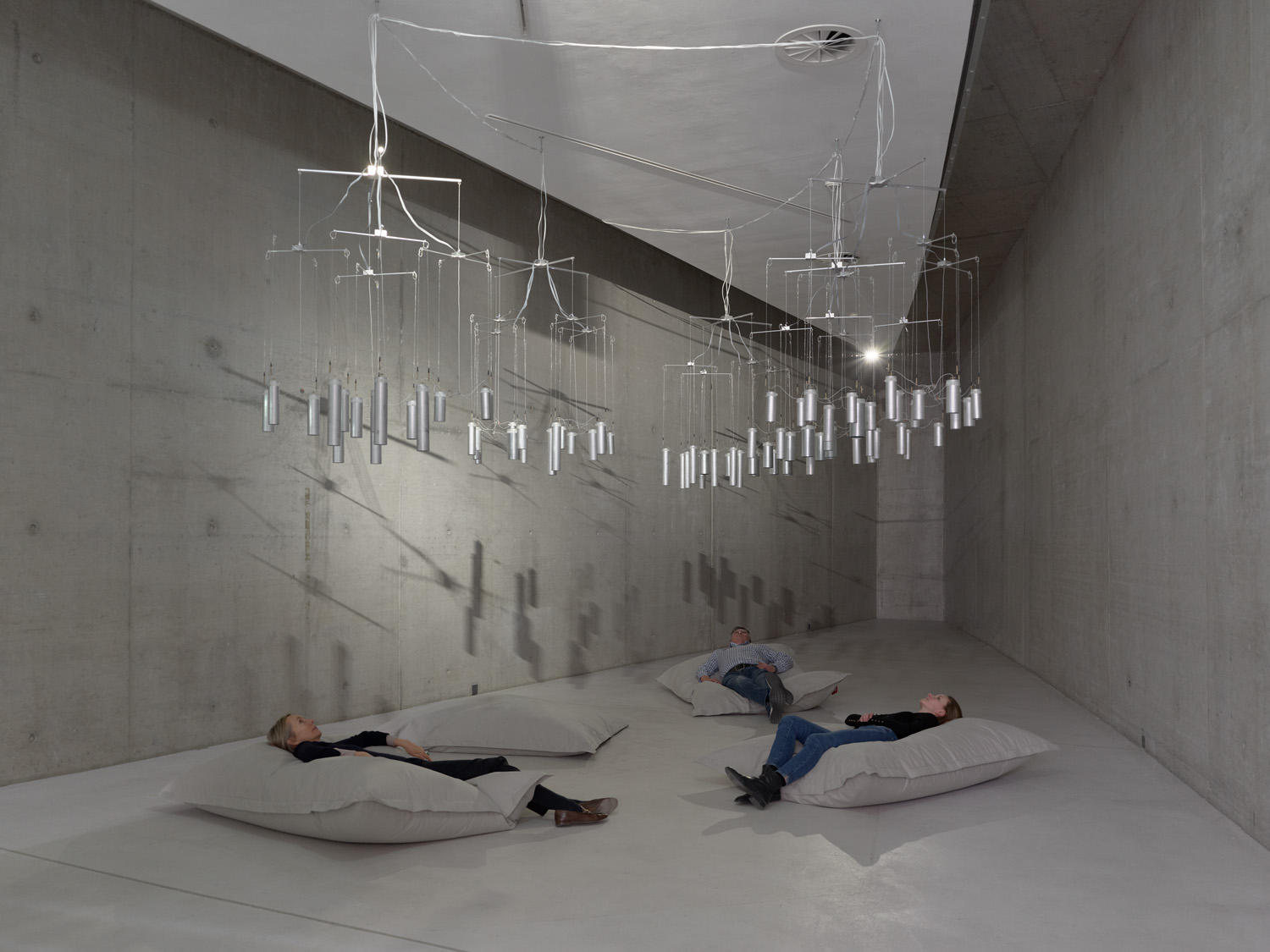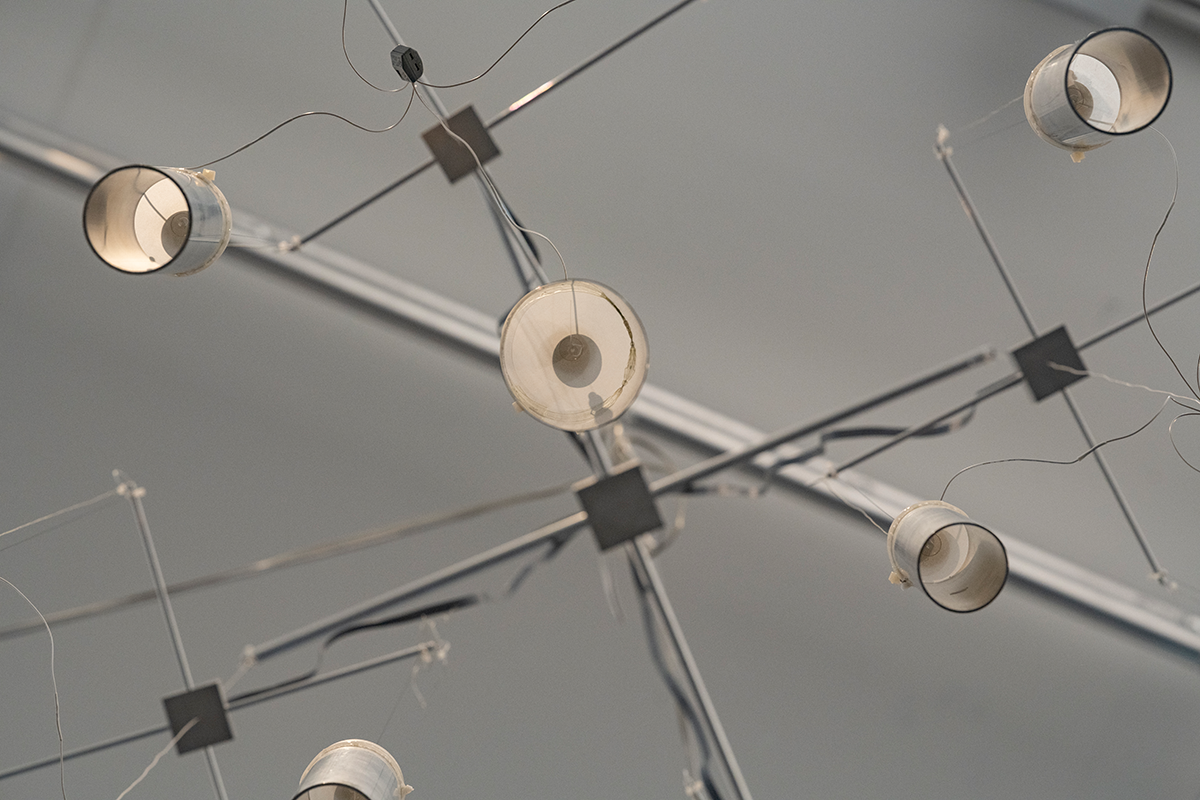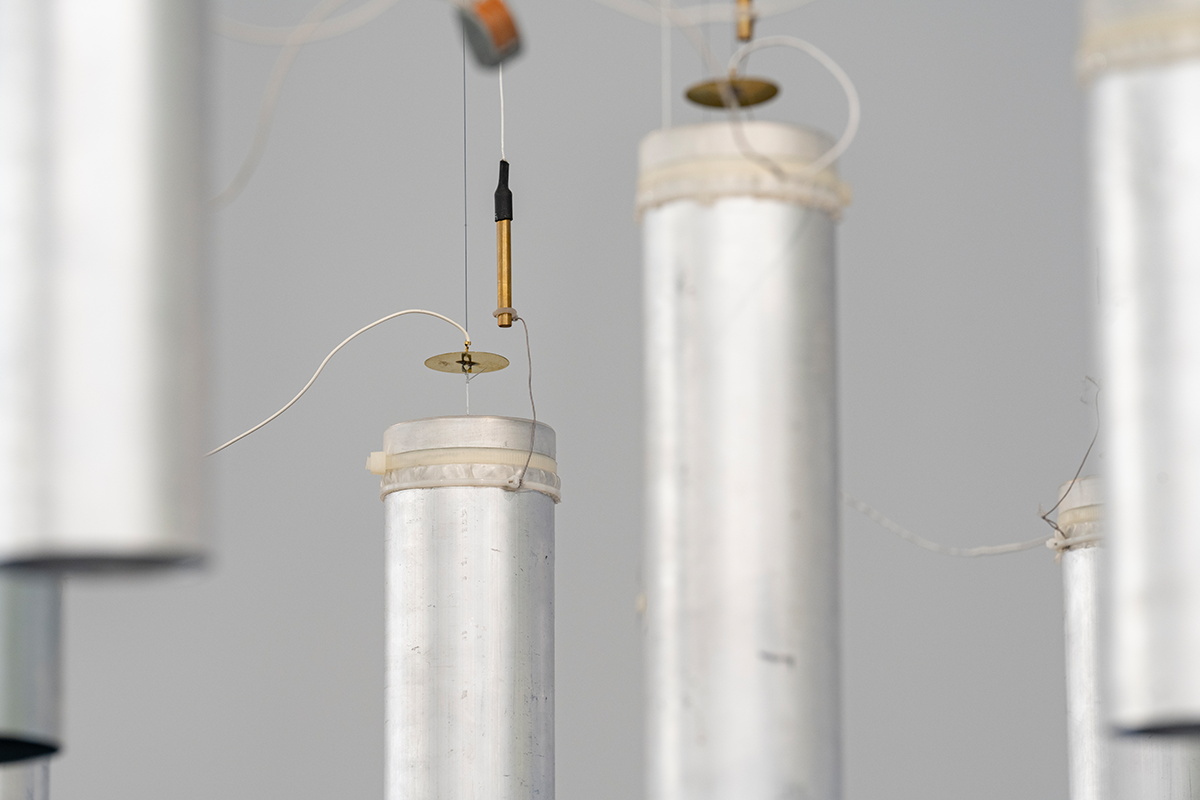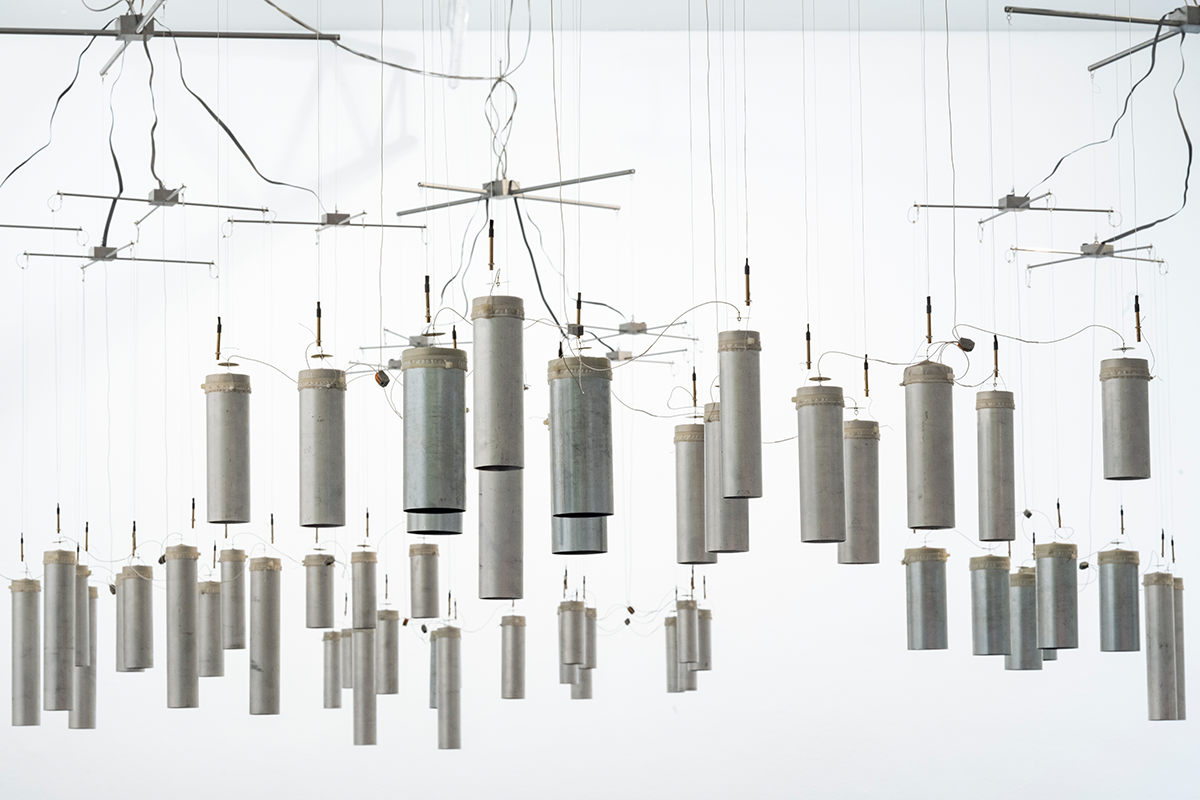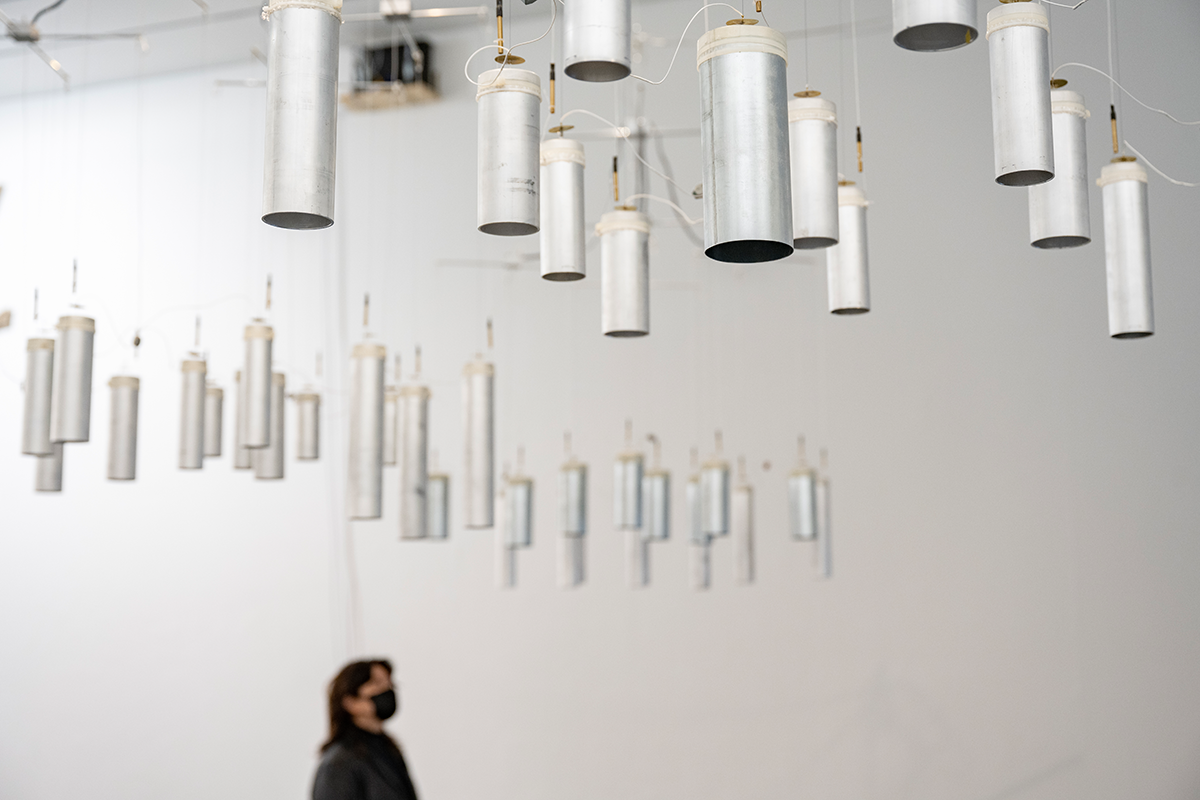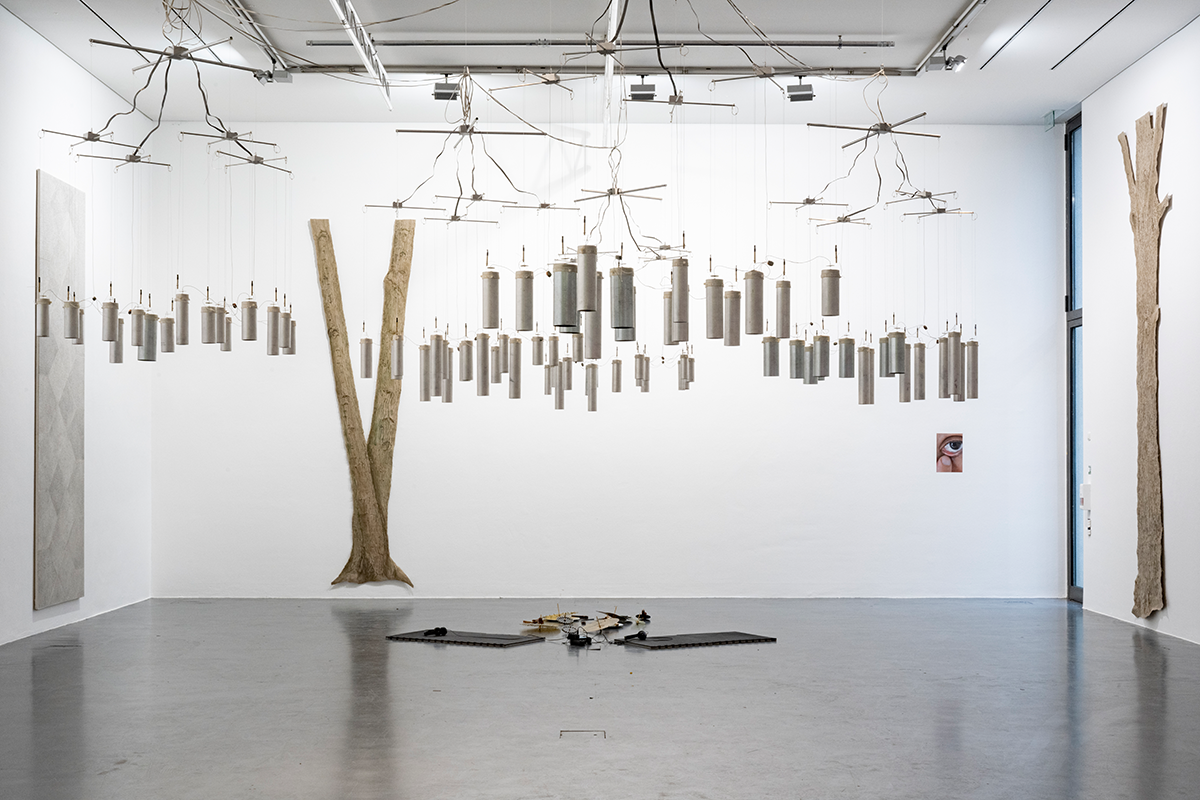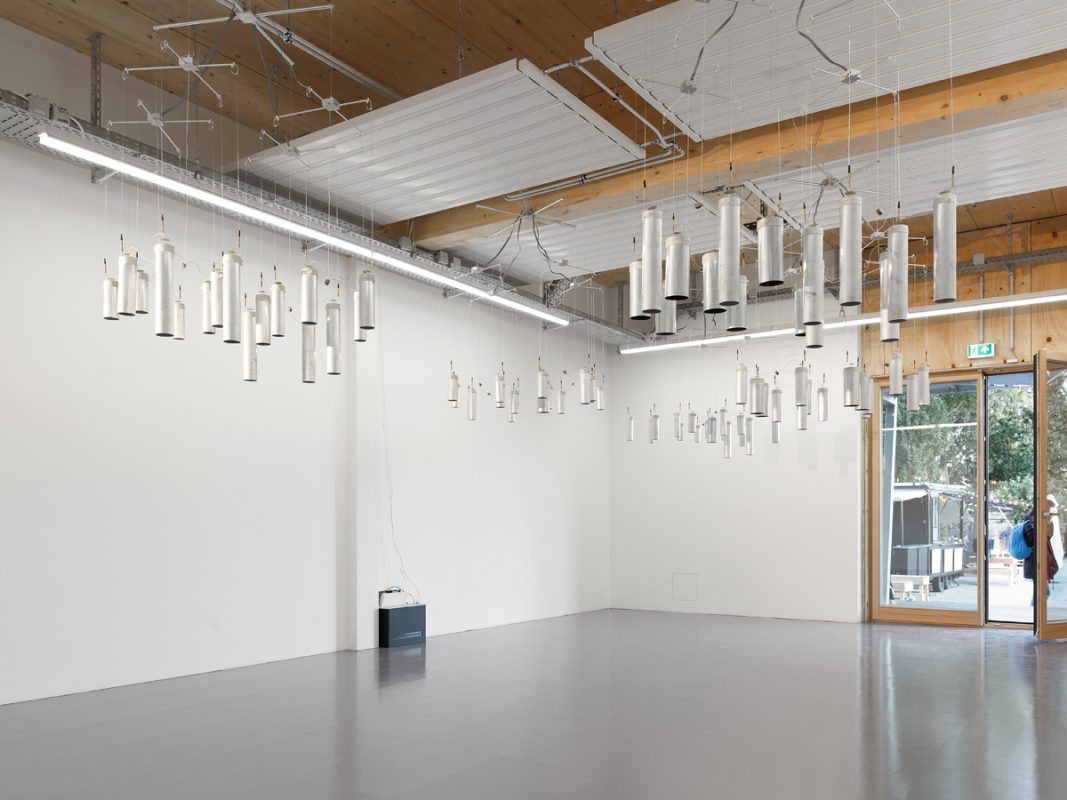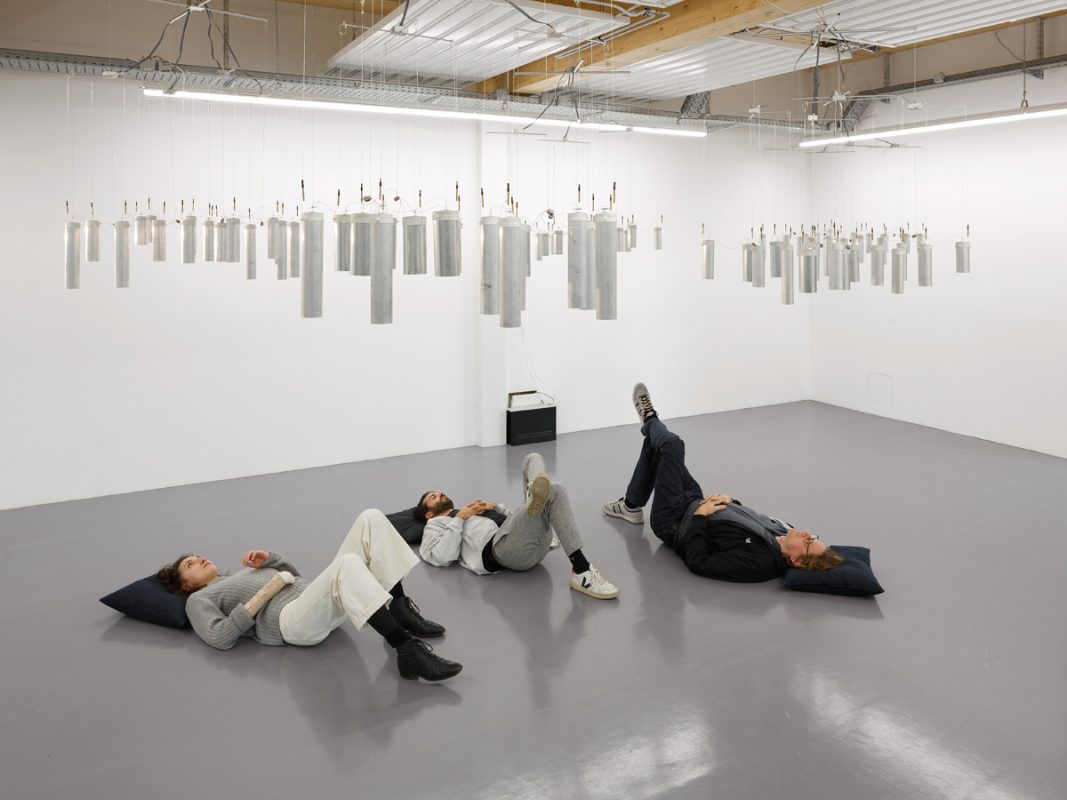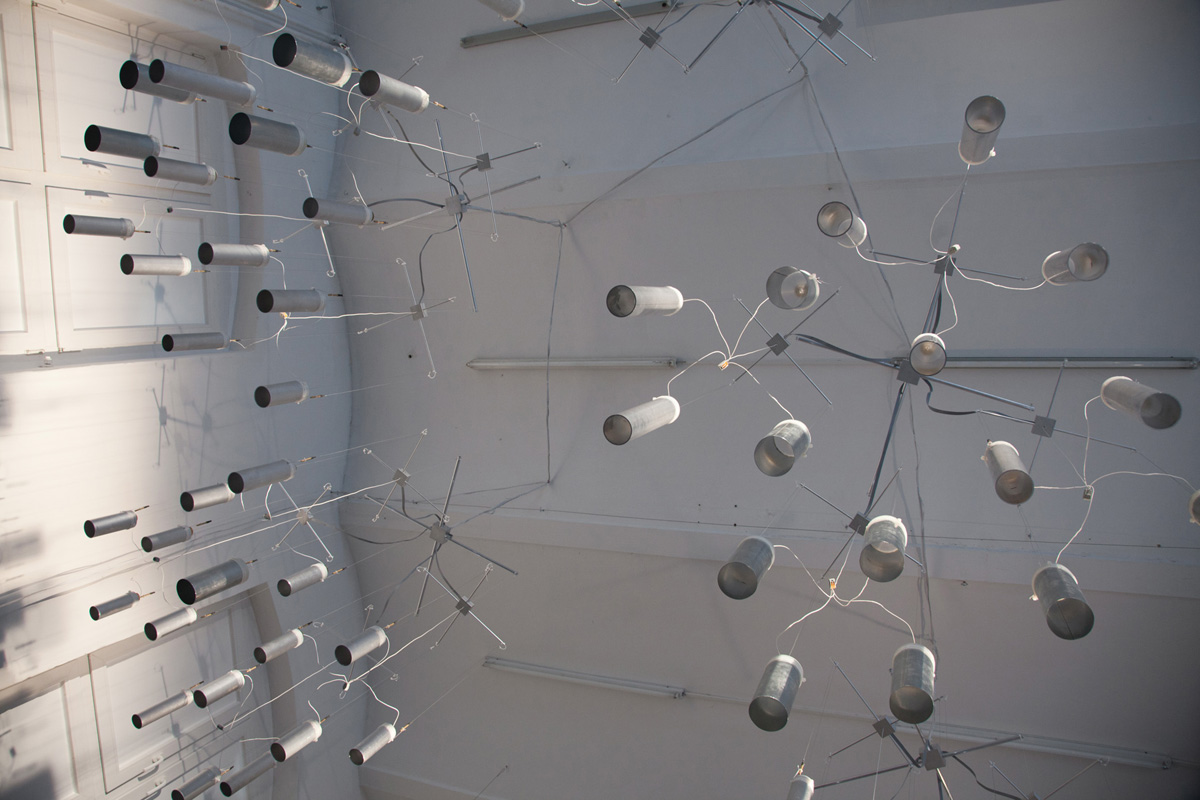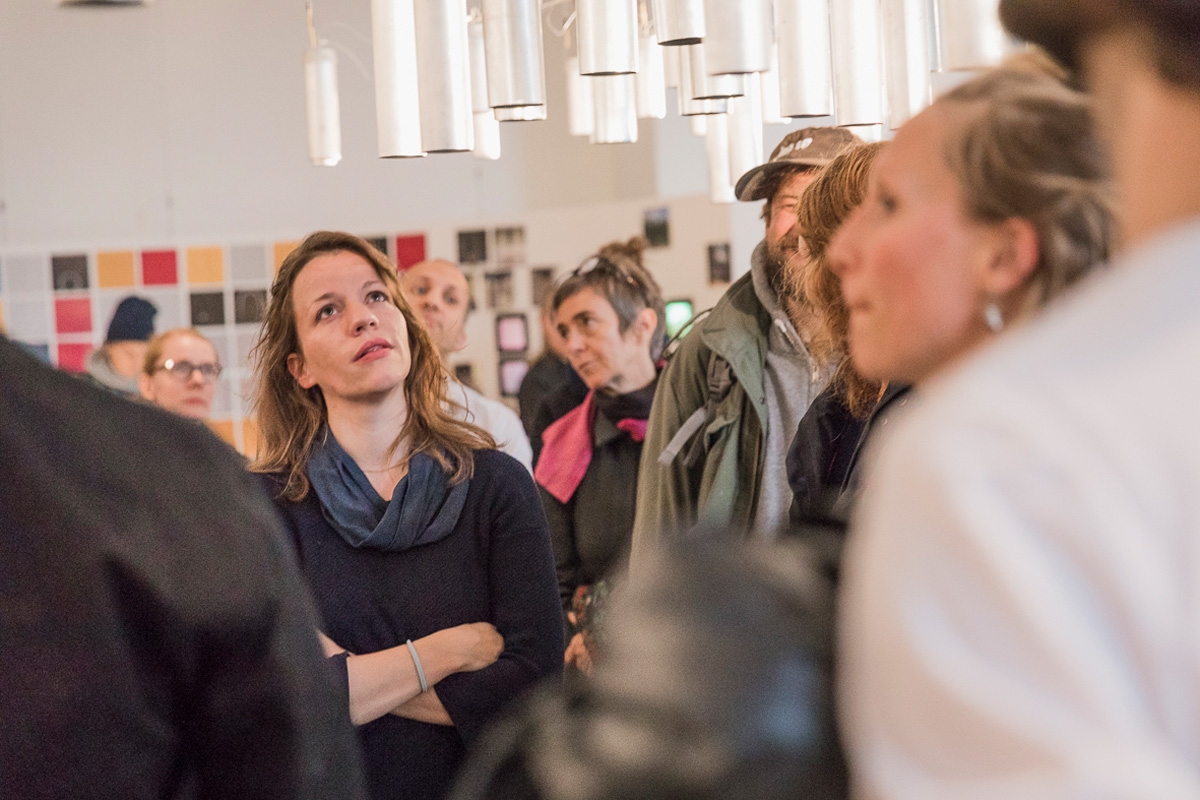Pluvial
Pluvial refers to an age determined by rainfall, a period with high precipitation, a season like the wet monsoon, continuous rainfalls of severe wheathers or a state of being rainy. The sound installation Pluvial takes the form of a sono-tactile architecture and spacial instrument, that follows the associative and physical quality of rain noise. It simulates and creates acoustically rainy, watery conditions and explores the sensual and conceptual relationship between man and place by connecting the listening body with a self-organizing, animated system.
The eighty-channel spatial instrument consists of self-made, digitally controlled drums that work according to the String-Drum principle and use the shape memory alloy Nitinol as instrument string. The hanging drums balance floating in a large cloud-like mobile. Their metallic resonance tubes lift and lower at the heat-sensitive, kinetic nitinol strings, sending and knocking swelling rhythms and rushing harmonies through space. Pluvial invites to enter and follow the acoustic and tactile sounds.
Rain materializes white noise: modulated by the drop size and intensity of precipitation, acoustically and tactilely filtered by the quality of the environment that the drops encounter. In analogy to the phenomenon of rain, these string drums are driven by random on-off voltage pulses, which in turn are modulated by the density and intensity of collected precipitation measurements on the world‘s oceans.
The result is an acoustic environment that unfolds in time and space, modulating from barely audible to expansive rhythms. The physical body of the drum cloud with its different resonance frequencies and their harmonics acts like a set of bandwidth filters – defined by the different tube lengths, widths and materials, as well as by the randomly varying tensions of the drumheads. In addition, each drum is equipped with a feedback pendulum that interrupts the circuit when it is heated and fully tightened, allowing the rhythms of the individual drums to diverge further.
The work explores rhythm and the sonic as carriers that are able to wander in-between different senses, mental modes, ways of thinking, and generating sense. It ties in with the experience of being outside in changing weather conditions, with the openness of perception that arises when one is exposed to these conditions without protection.
Installation Sculpture Sound Work / 2019
aluminum, tin, brass, nitinol, silicon, strings, cable ties, custom-made hard- and software
in close collaboration with Thom Laepple
Thorsten Schumm and Simon Stellmer, research project nuClock
Part of the research project “Rhythmic Textures”, funded by Einstein Foundation Berlin
Realized with the Graduate School at the Berlin University of Arts.
supported by the SMArt® Steps Program of Dynalloy.Inc
The modulation of the random pwm-control-volatage is based on the open source data of the Ocean Rain And Ice-phase precipitation measurement Network (OceanRAIN)
